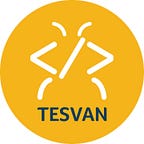We are usually talking about QA basics, testing tools, skills, frameworks and approaches, but…
what if you have faced a case to choose a good/powerful laptop suitable for your work and have some lack in knowing how to do that?
This useful article is special for you, keep reading!
While taking your first steps in the IT field you will probably face the case of choosing the right laptop with good parameters․
We have prepared a guideline to help you choose a good laptop.
Follow the steps:
The Processor
Here we are dealing with two main brands: Intel and AMD.
In the Core brand of Intel chips, after the name “Core” you will find a brand modifier, such as i3, i5, i7, or i9. The higher the modifier, the higher the CPU performance and capabilities.
When buying a laptop with an Intel processor, focus on models with i5 and higher modifiers.
As for laptops with Ryzen processors, which are not so many in the Armenian market compared to Intel, in this case, we recommend choosing models with AMD Ryzen 5 or a high index.
Processor model
Here we must pay attention to the generation of the processor, in the case of intel processors, it is highly recommended to buy a laptop with at least the 10th generation. In the case of Ryzen, at least the 5th generation.
The processor’s generation is identified by the first/first two digits of the four-digit / five-digit number mentioned in the processor model, such as AMD Ryzen 5 5600H (5600, therefore we have here 5th generation), or Intel Core i5 10210U (10210 in this case, we have 10th generation).
The core of a processor, which is an important point as well must be at least 4.
Then, one more indicator that is included in the processor model is the product line suffix, which is expressed in the letters: G1, G7, H, U, Y, etc.
What does each of them mean?
G — Includes discrete graphics on the package
G1-G7 — Graphics level (processors with new integrated graphics technology only)
H — High performance
U — Power efficient
Y — Extremely low power
F — Requires discrete graphics
Considering all this, it is necessary to understand which type you need to then make a choice accordingly. Of course, it is recommended to buy a laptop with H type processor, but their price is quite high compared to others.
The Screen
Size:
13.3 inches (33.8 cm),
14 inches (35.6 cm)
15.6 inches (39.6 cm)
17.3 inches (43.9 cm)
Depending on what you usually do, the purpose for which you use the laptop, you can choose the size that suits you best. A 15.6-inch screen is generally considered to be the optimal size, but if you are a graphic designer, for example, it may be more effective to work with a larger screen. So, this is more a matter of preference.
Screen resolution
If you are a programmer or QA engineer for whom screen resolution is not a priority, then choose at least full HD (1920 x 1080).
Matrix display type:
TN- (low image quality, low viewing angle, poor color gamut) avoid buying computers with this matrix type
IPS — (high-quality image display, large viewing angle) we recommend choosing models with this type of matrix
VA — intermediate position between TN and IPS
The Memory
RAM
The next important point to consider when buying a computer is, of course, the RAM, on which mostly depends the capacity of the laptop.
We recommend choosing models whose RAM will be not less than 8GB (preferably higher — 12GB, 16GB, etc). By the way, most of the models have the possibility of increasing the RAM which means you can buy a computer with 8GB of RAM, later doubling it to 16, thus paying less than costs any other model with the initial 16GB of RAM.
So when buying a laptop, pay attention to this fact as well.
While choosing between DDR3, LPDDR3, LPDDR4, DDR4 processors always choose DDR4 or if you want to save some money choose its energy-efficient version LPDDR4.
SSD/HDD hard disk
We recommend giving your privilege to laptops with SSDs (512GB or larger memory capacity), as in this case the capacity and efficiency of the computer are obviously higher.
HDDs, being relatively older information storage devices, are considered vulnerable and slow.
Note that SSD in turn has its types:
SATA, PCIe, M.2, U.2 each of which has its own characteristics and differs from the others by its price:)
For more details:
https://www.tomshardware.com/reviews/ssd-buying-guide,5602.html
The Graphics
Integrated graphic card / Discrete graphics
Like in the case of processors, here as well we are dealing with two major brands: Nvidia’s Geforce and AMD’s Radeon graphics discrete cards, for example:
Extremely low productivity
GeForce 920M, 920MX, 940M, 940MX:
Radeon R5 M330, R5 M430, 520, 530:
Low productivity
GeForce MX110, MX130, MX150, MX230, MX250, Raedon 540, 540X
Medium productivity
GeForce 1050, 1050Ti, Raedon RX 560X:
High productivity
GeForce 1650, 1060:
Extremely high productivity
GeForce 1070, 2060, 2070, 1660Ti, 1080, 2080:
The Ports
When choosing a computer, pay attention to the models that have at least 1 USB-C, at least 1 USB-A, HDMI, and microphone/headphone connection capability.
We really hope this article was useful for you!
